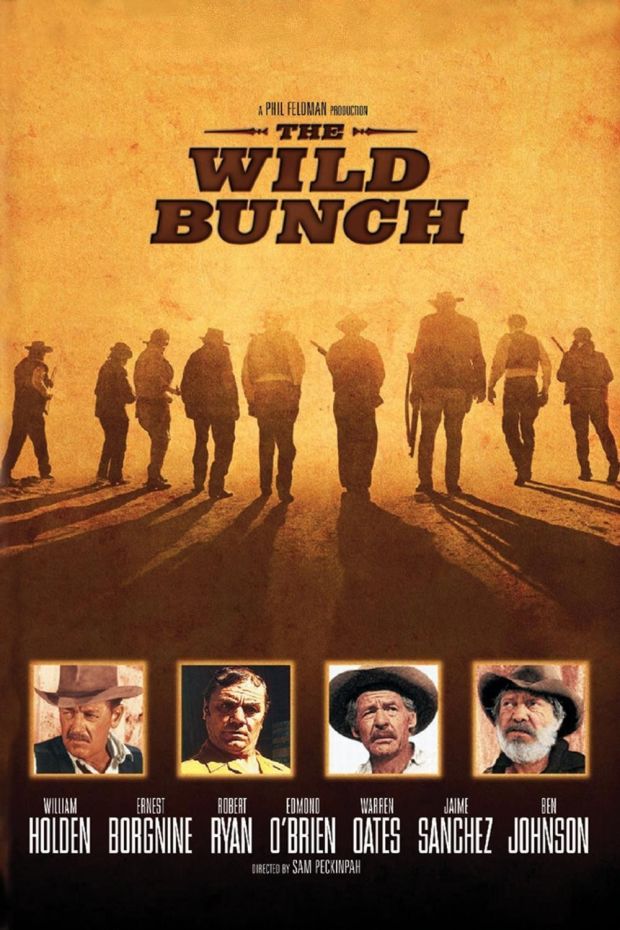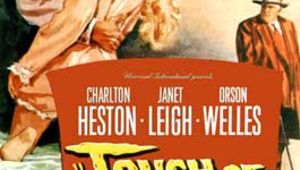It’s not unusual for film certificates to be changed with the passing of time. Midnight Cowboy, awarded a porn-worthy X on its original release in the US, now plays on the festival circuit as an R, while The Rocky Horror Picture Show, once deemed scandalous and perverting, now plays on TV like a mildly saucy pantomime. Which makes it all the more telling that when the Director’s Cut of Sam Peckinpah’s The Wild Bunch was re-released 25 years after its first outing, the American censor removed its prohibitive R rating, only to add an even-more prohibitive NC-17 instead.
While such upgrading might not be justified, it is understandable when you consider that people don’t often die on-screen the way they do in The Wild Bunch. In the film’s much-vaunted finale staged within an adobe fortress, around 10,000 explosive squibs were used over 12 days of filming to simulate bullet hits on everything and everyone. Legend also has it that the production used more ammunition than was expended in the actual 1914 Mexican revolution on which the film was based.
It isn’t just the quantity of violence either, it’s the quality. Before The Wild Bunch, cowboys simply fell to the ground clutching their stomachs. Here, bullets pass clean through bandidos, tearing open their shirts and sending their viscera spurting in spectacular slow motion. And while only the bad guys bit the bullet in Arthur Penn’s Bonnie & Clyde (released two years previously) Peckinpah spares nobody. Women, children, entire temperance groups – they all buy the farm in this great big My Lai massacre of a movie.
The Wild Bunch had a lot riding on it for ex-Marine Peckinpah, who had been blacklisted in 1965 after kicking up a fuss about the way the execs had emasculated his cavalry epic Major Dundee. Four years later, Warners producer Phil Feldman threw him a lifeline in the form of a Lee Marvin action movie, The Diamond Story, but when Marvin walked off to make the stupid but financially lucrative Paint Your Wagon, Peckinpah was left high and dry. Frantic to avoid returning to TV gigs, he pitched a script developed from an idea by his old stuntman buddy Roy N Sickner and based on the late 19th century outlaw ‘co-operative’ The Hole-In-The-Wall Gang. Feldman took one look at the screenplay and gave The Wild Bunch the greenlight.
The picture tells the story of some ageing outlaws who realize that the march of technology and civilization has brought the era of the Wild West to a close. Pike Bishop (William Holden) and his posse pull off one last big job to set them up for retirement, but they are pursued south of the border by former ally turned railroad-sponsored bounty hunter Deke Thornton (Robert Ryan). Bishop’s men run afoul of degenerate Mexican general Mapache (the infamous Latino director Emilio Fernandez) and their lives are spared provided they hold up a train carrying government arms. The posse completes its mission only to then turn all this modern firepower on the Mexicans, who die in waves as they slowly take down Bishop’s gang piece by bloody piece.
More...
Such on-screen excess would have been impossible without some extreme behind-the-camera dedication. Unhappy with the explosive tests he had seen, Peckinpah instructed second assistant director Howard Kazanjian – now better known as the producer of the Star Wars and Indiana Jones sagas – to load the squibs with blood and pieces of meat to get the desired effect. He also ordered costume designer Gordon Dawson to constantly repair the 350 Mexican army uniforms (he blew up 3,000 during the course of shooting) and go over all the blood spilt in the final epic fight with black paint, “because blood blackens as it dries”. According to Peckinpah regular Warren Oates (who played dumb Bunch member Lyle Gorch), Sam even used the technical effects to indulge in his favourite sport, annoying the studio executives. For one stunt, he rigged a knife that was used to simulate cutting a man’s throat so that, in Oates’ words, “the blood spurted from here to the street. It scared the shit out of everyone who saw the dailies.”
They weren’t the only ones. When The Wild Bunch received its first test screening in Kansas City, Missouri, almost half the audience ran out of the cinema. Those that stayed wrote things like, “Only a madman could call this creation! It’s not art! It’s not cinema! It’s pure wasted insanity!” With violence that’s still brutal even in these post-Tarantino times, Peckinpah uses his senseless slaughter to draw attention to the film’s central themes of loyalty, honour and the end of days. And while the director’s love of blood is clearly secondary to his concerns for friendship and male camaraderie, the film’s pyrotechnic gunplay remains one of The Wild Bunch’s greatest contributions to action cinema, explaining why directors continue to revisit and rework its unique brand of mayhem.
It was too intense for its time but Bloody Sam’s film now stands out as a watershed feature - and it’s impossible to imagine what modern movies would be like without it. Before the late ‘60s, Westerns were populated by darn’ tootin’ bad guys who always wore black and whiter-than-white one-shot sheriffs. Then along came The Wild Bunch and Hollywood would never be the same again.



